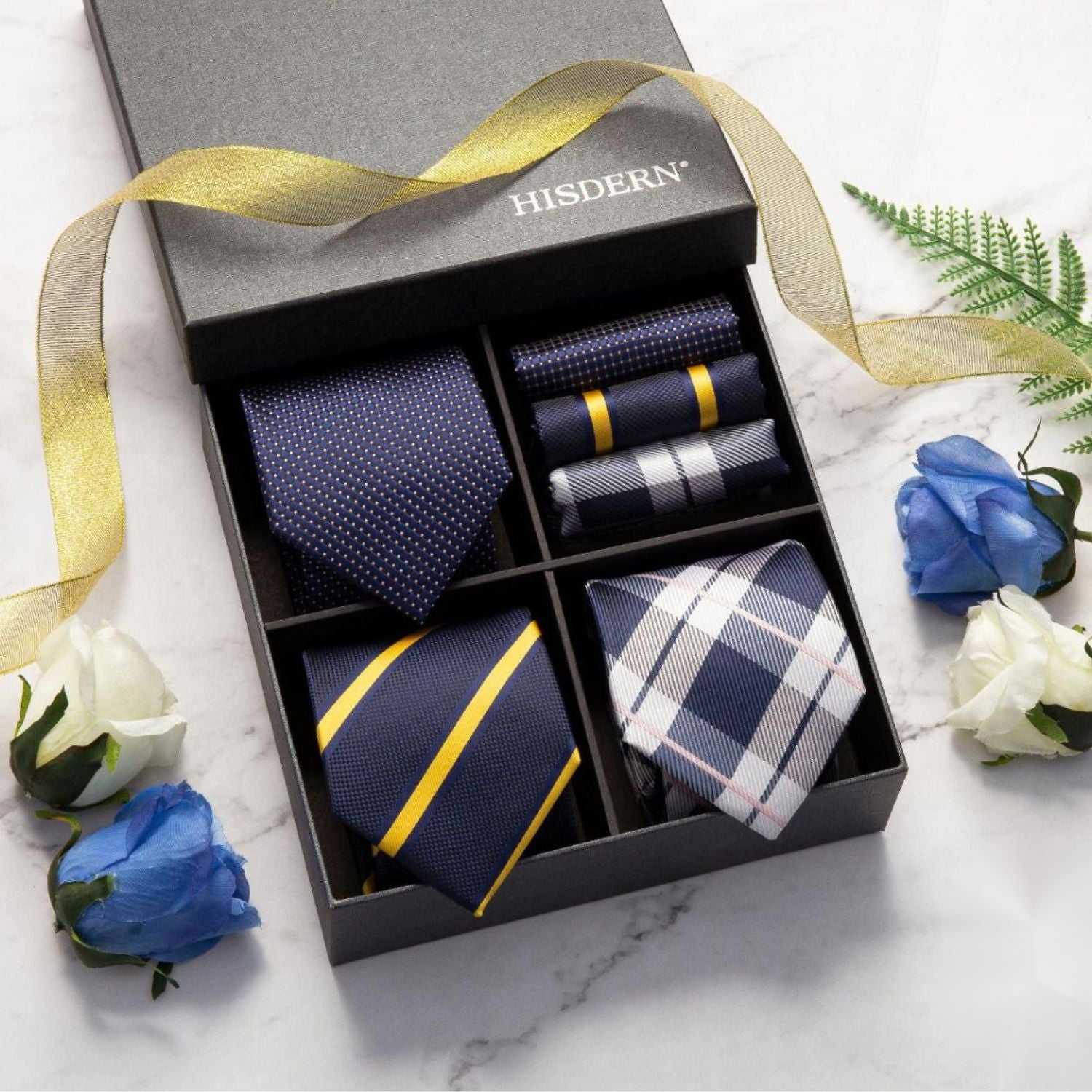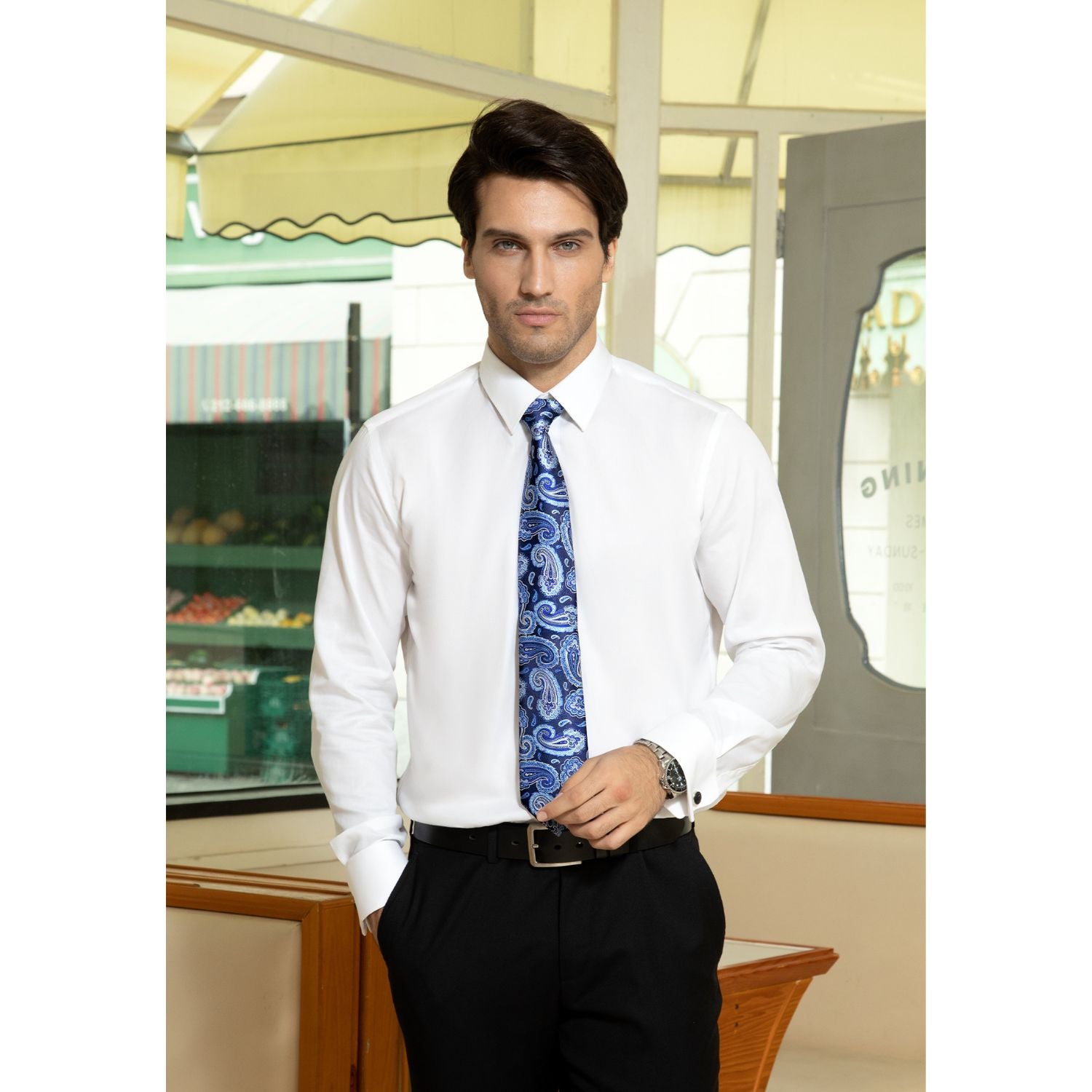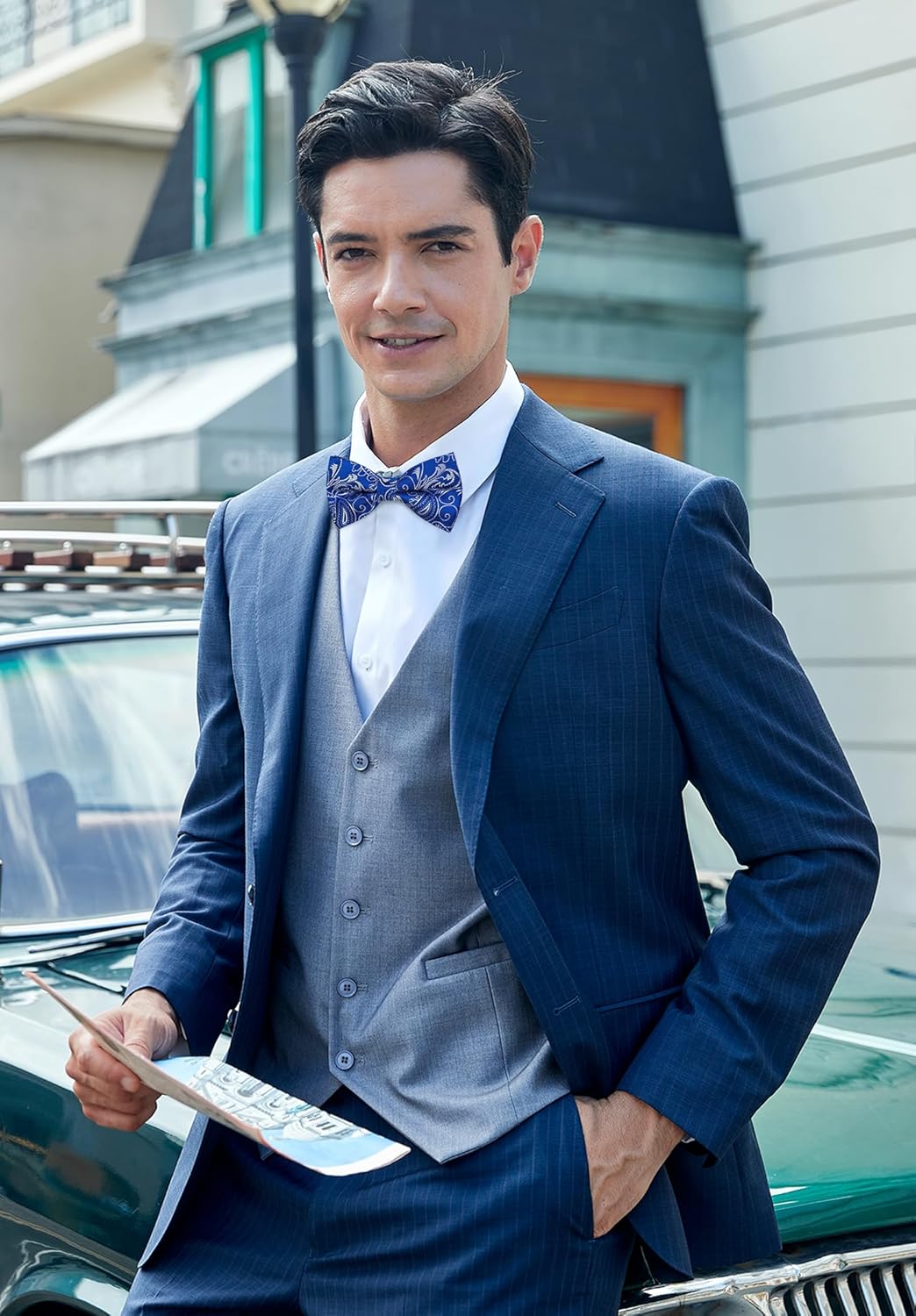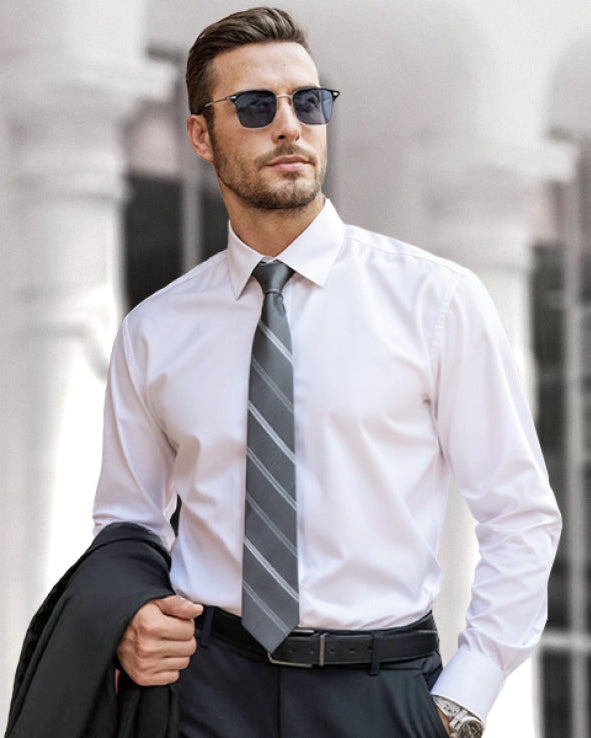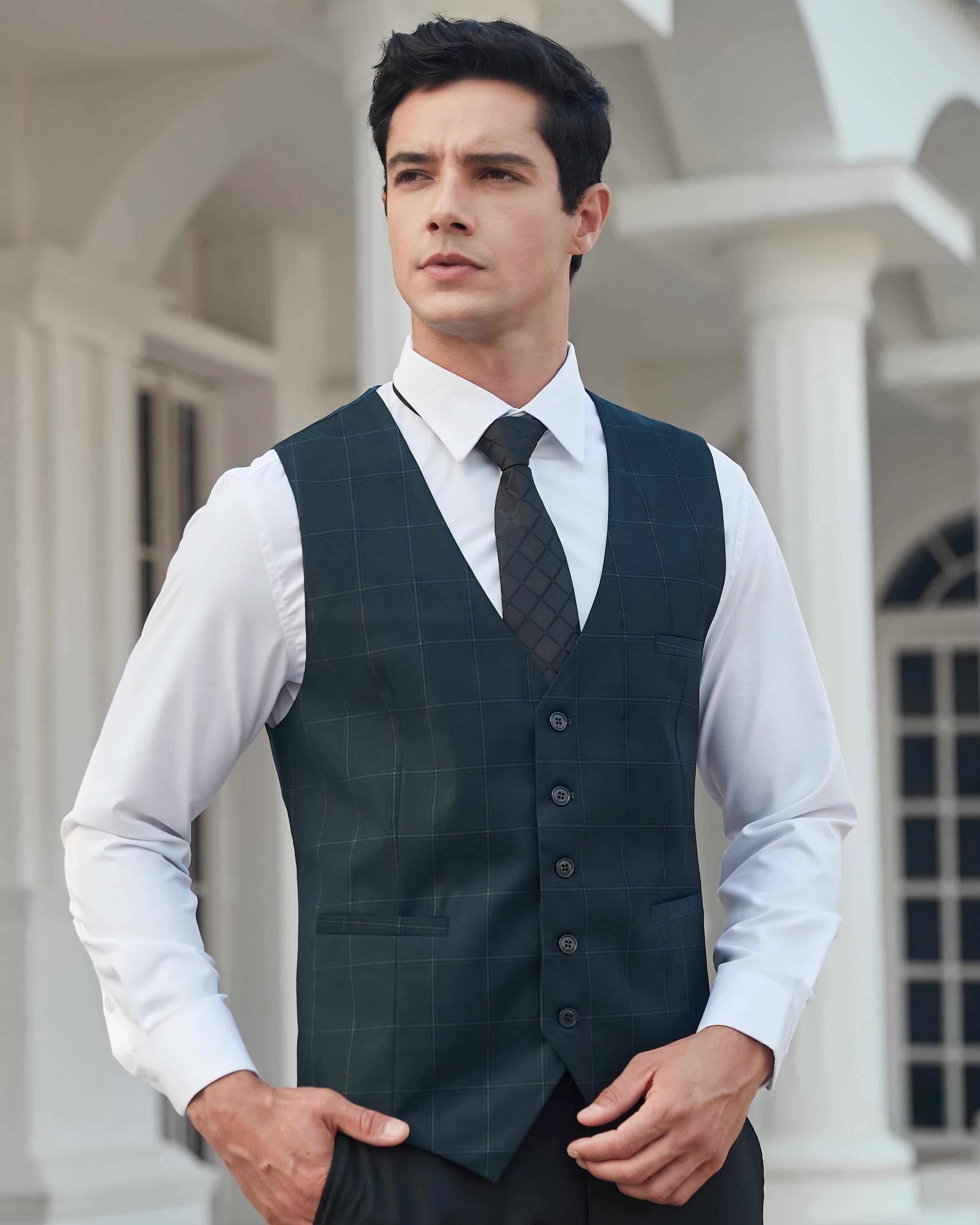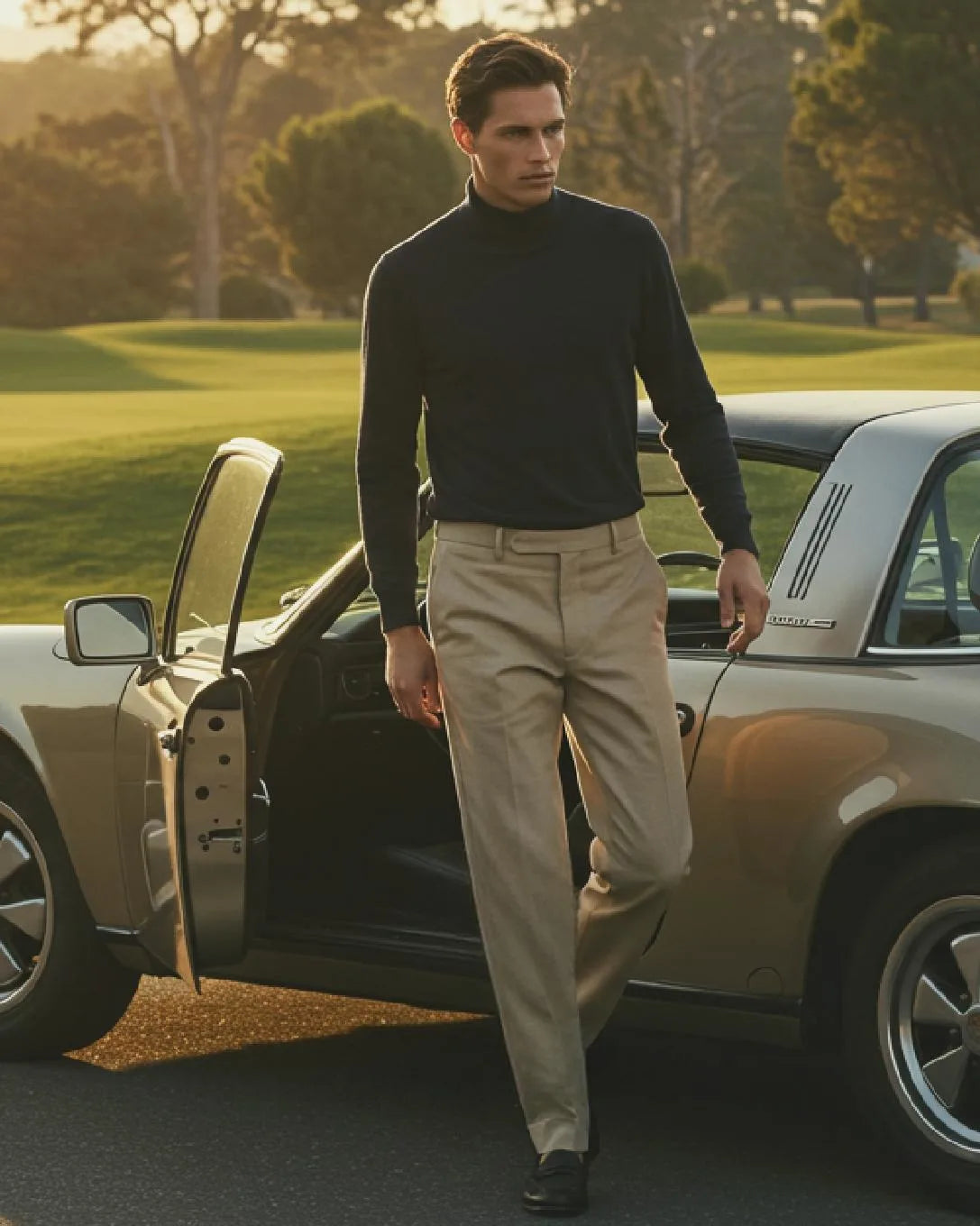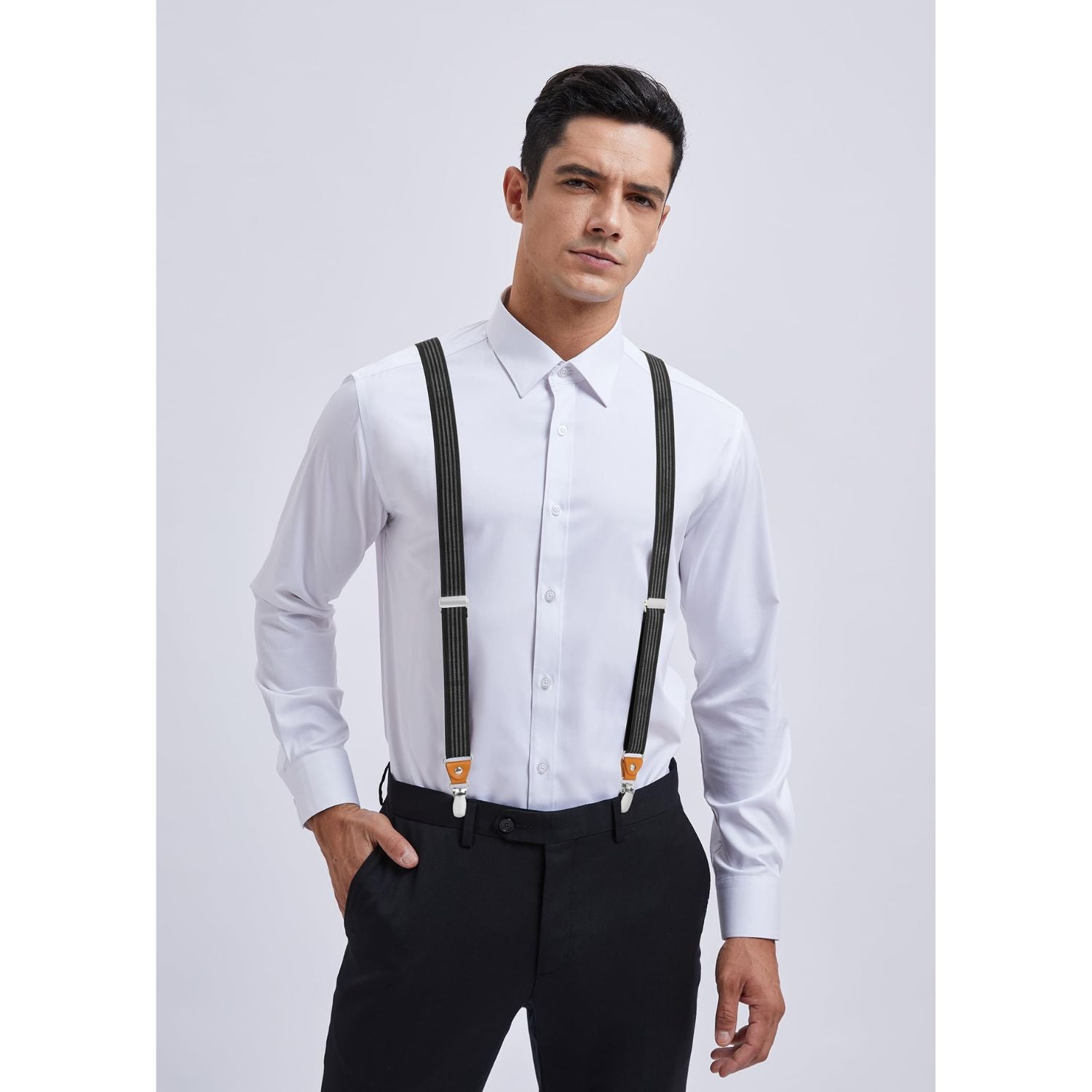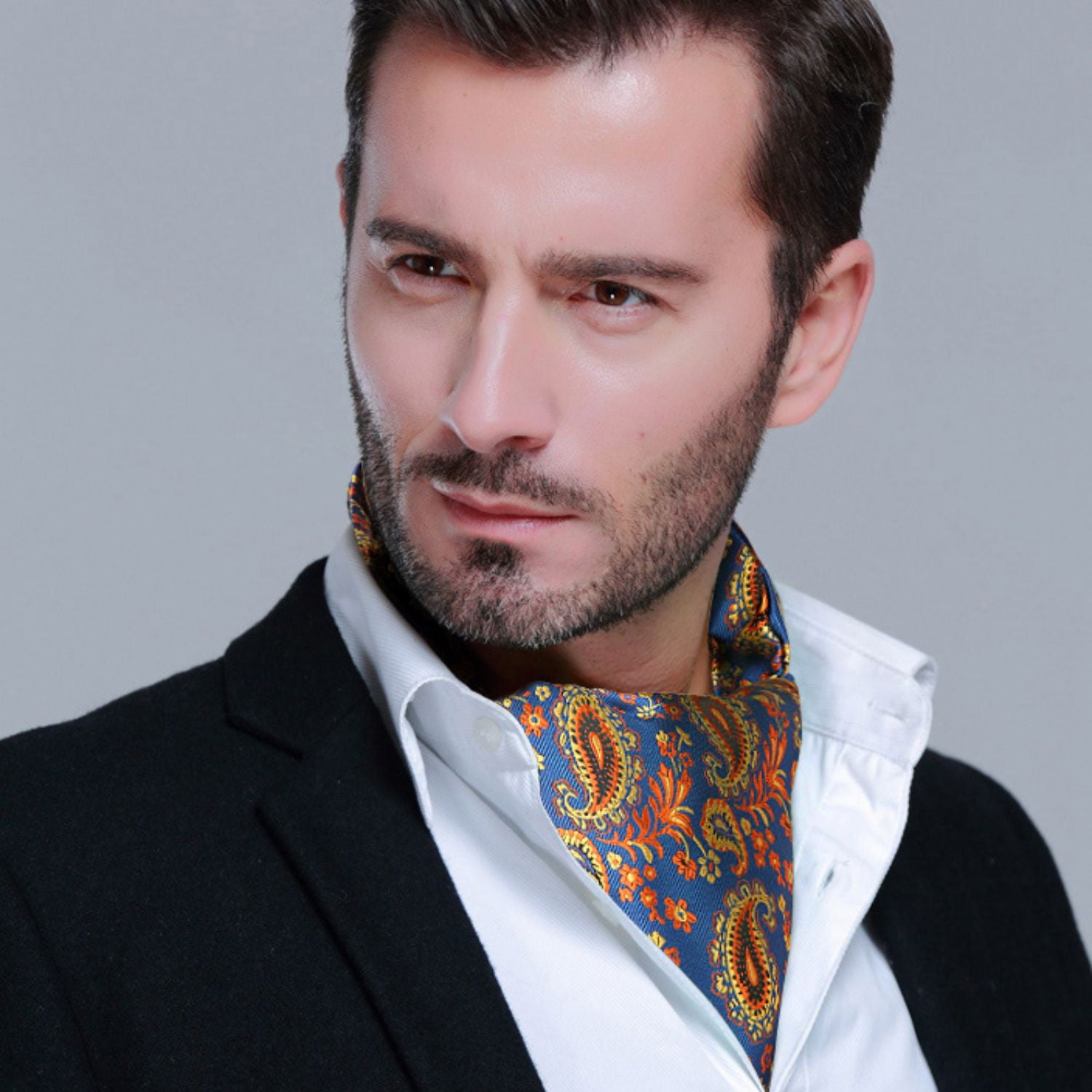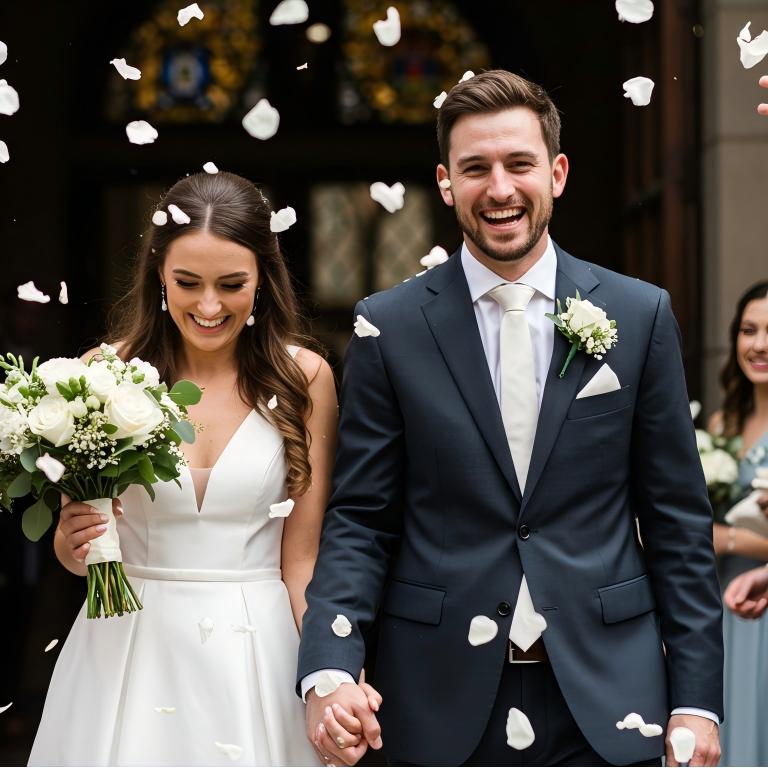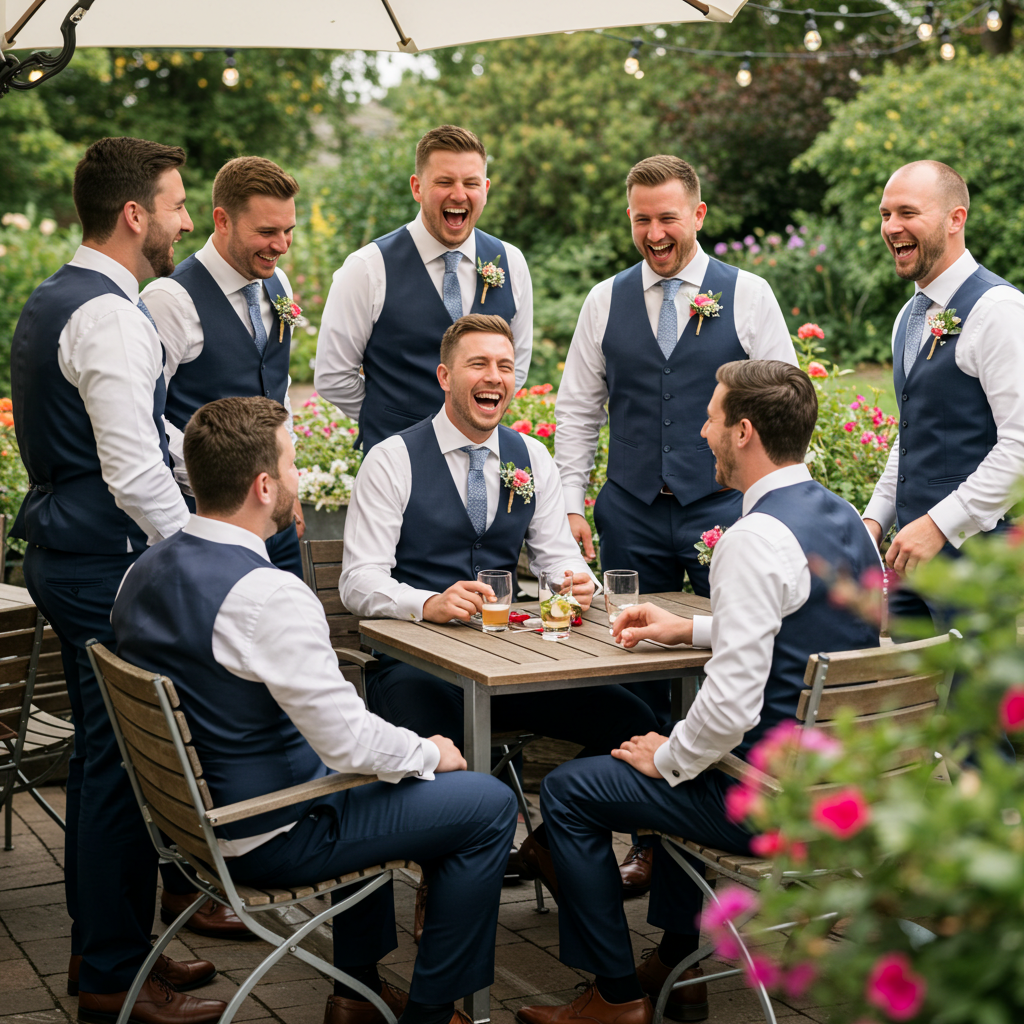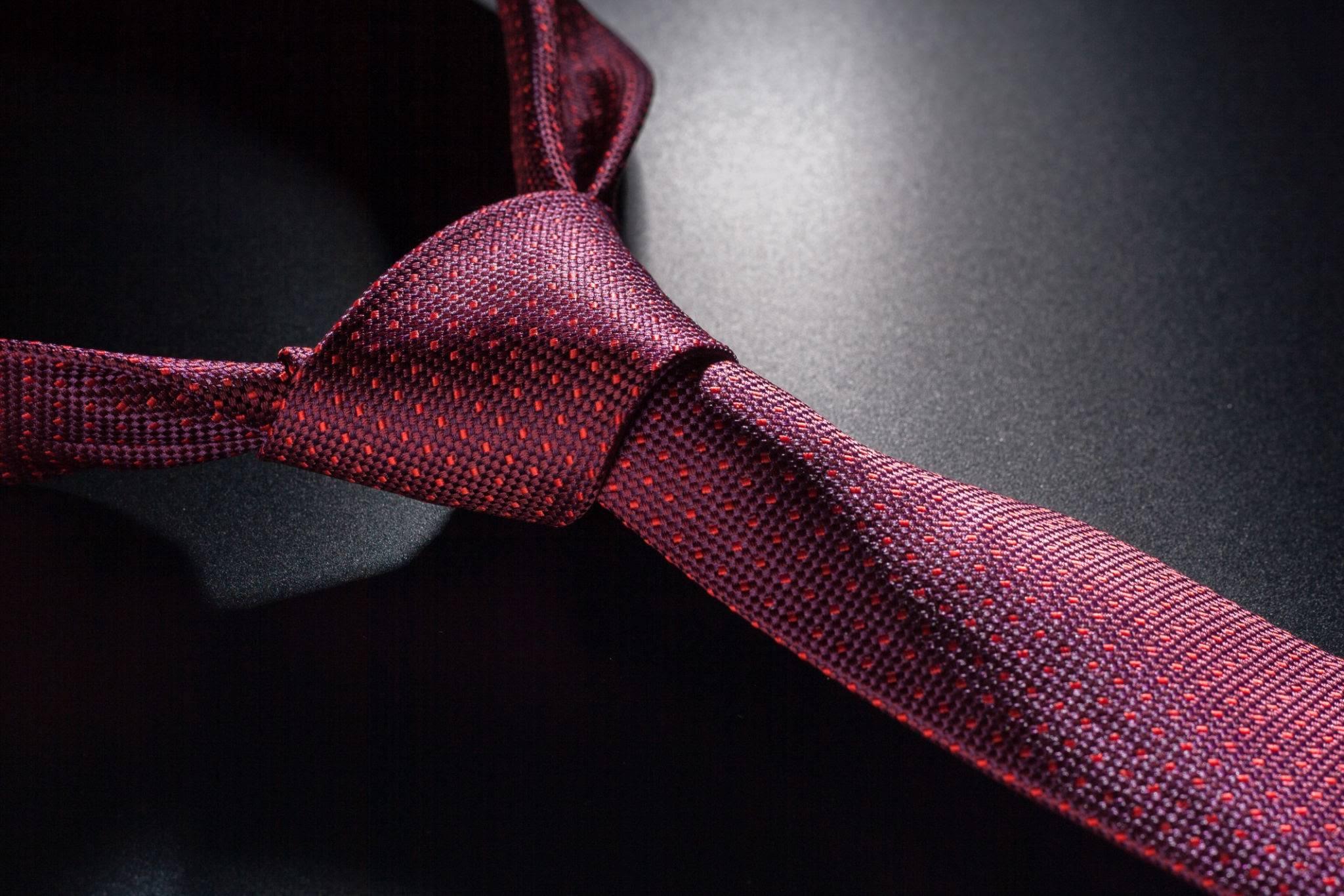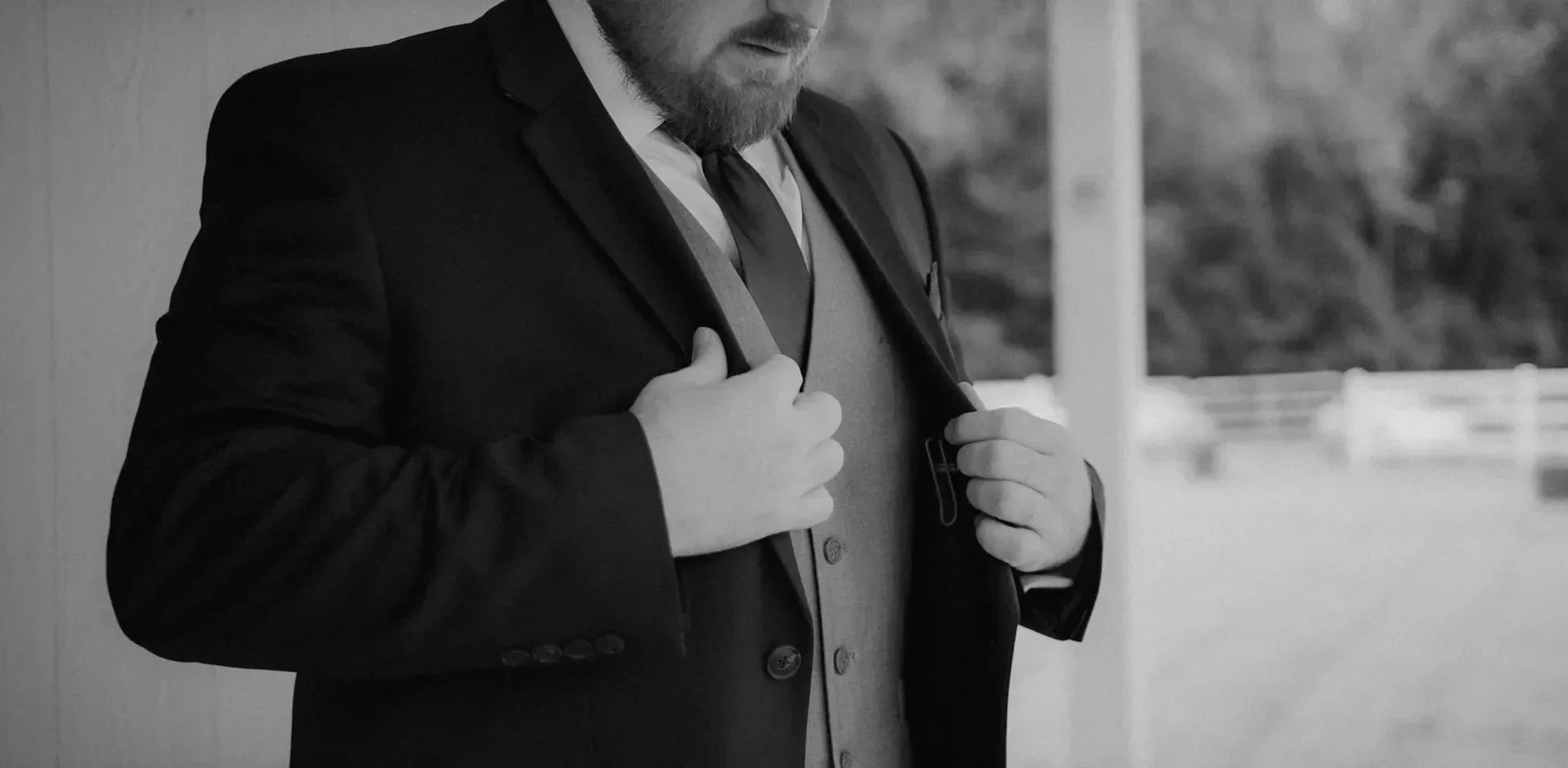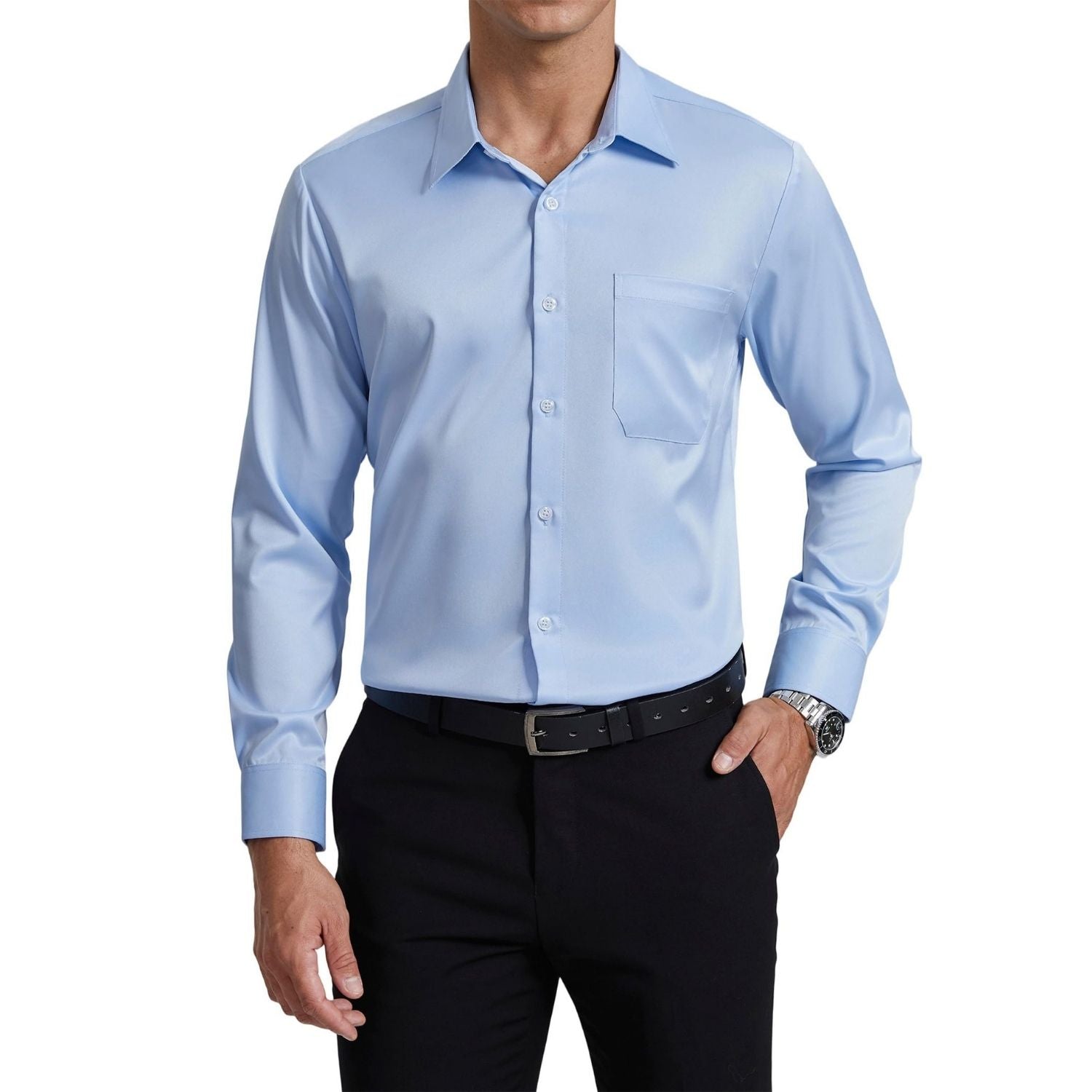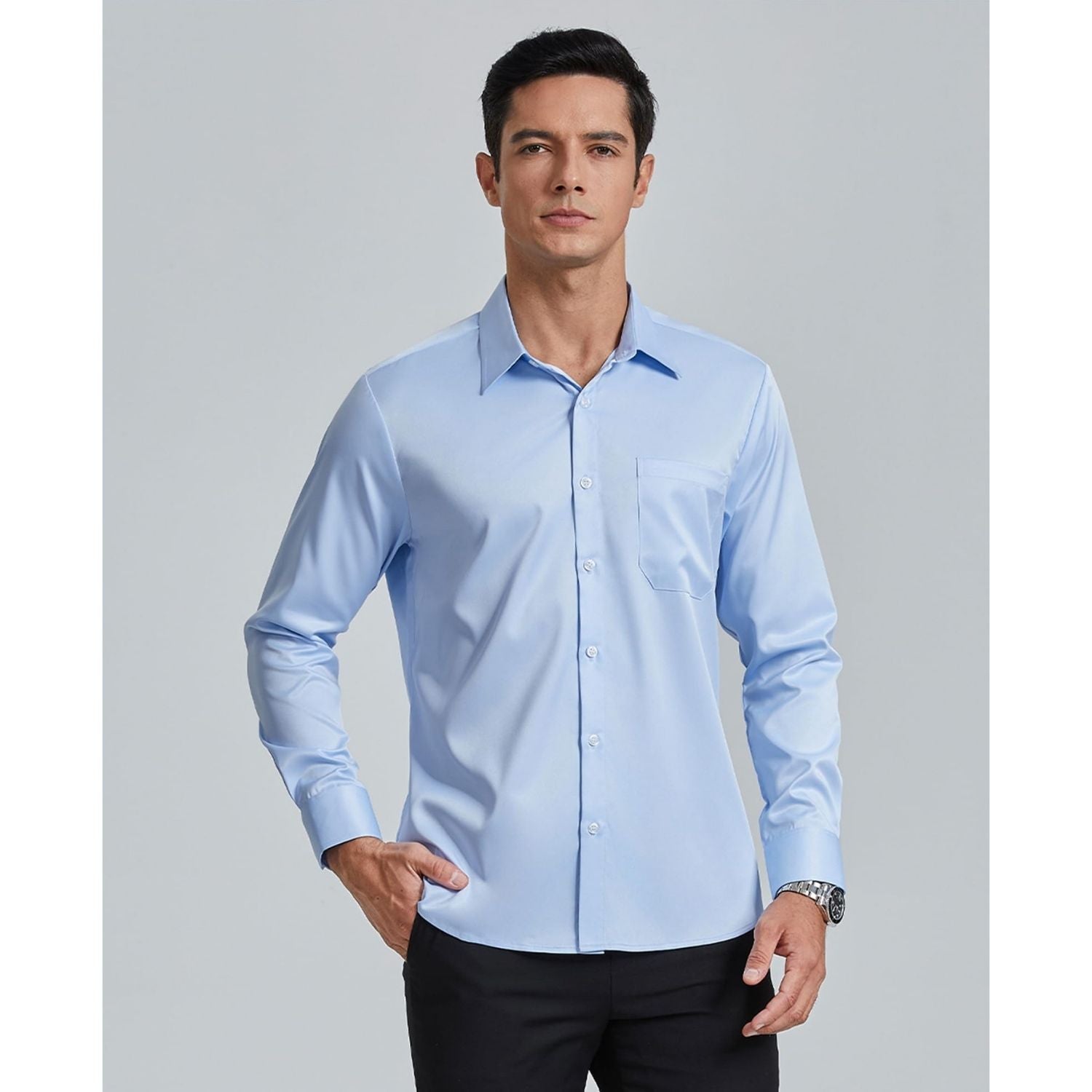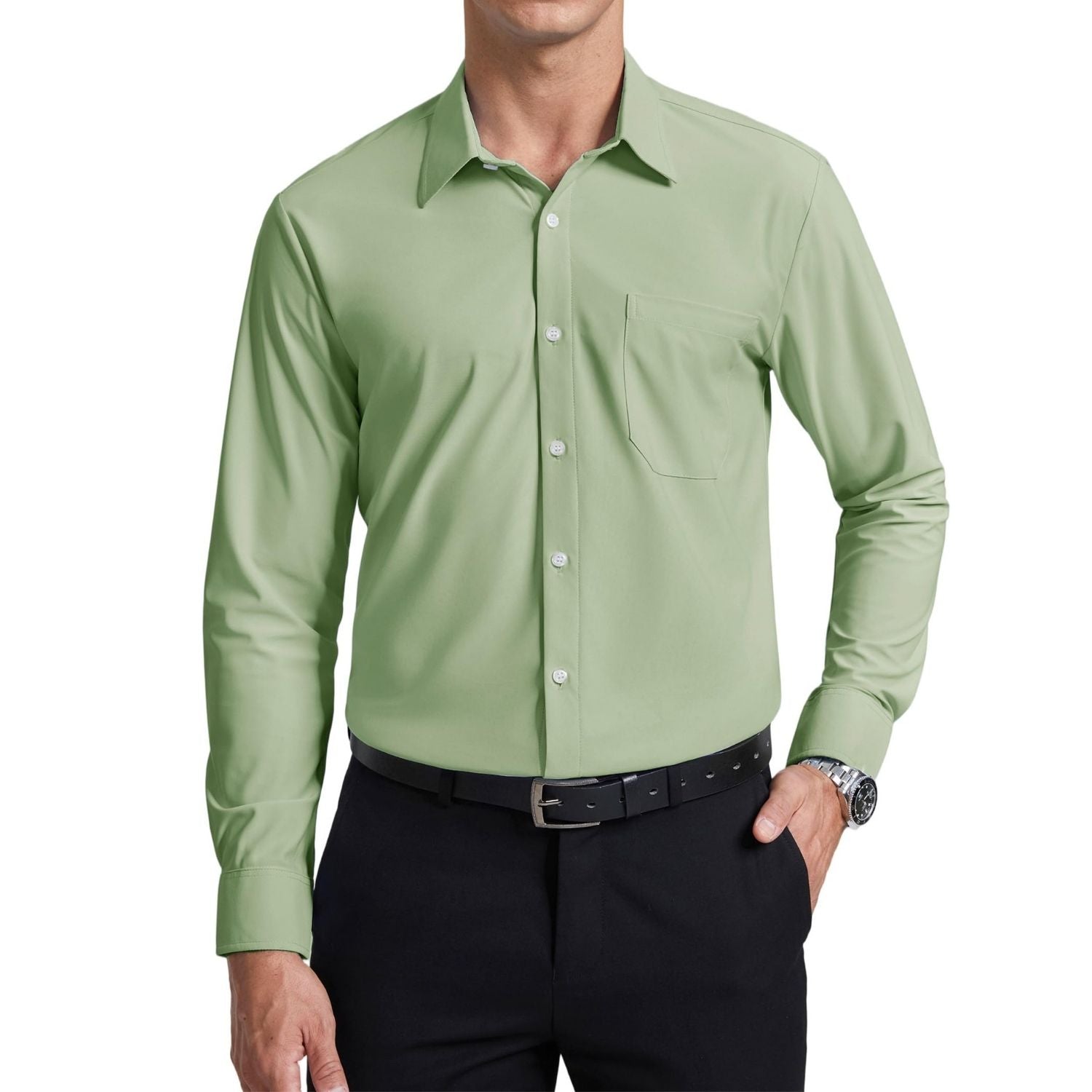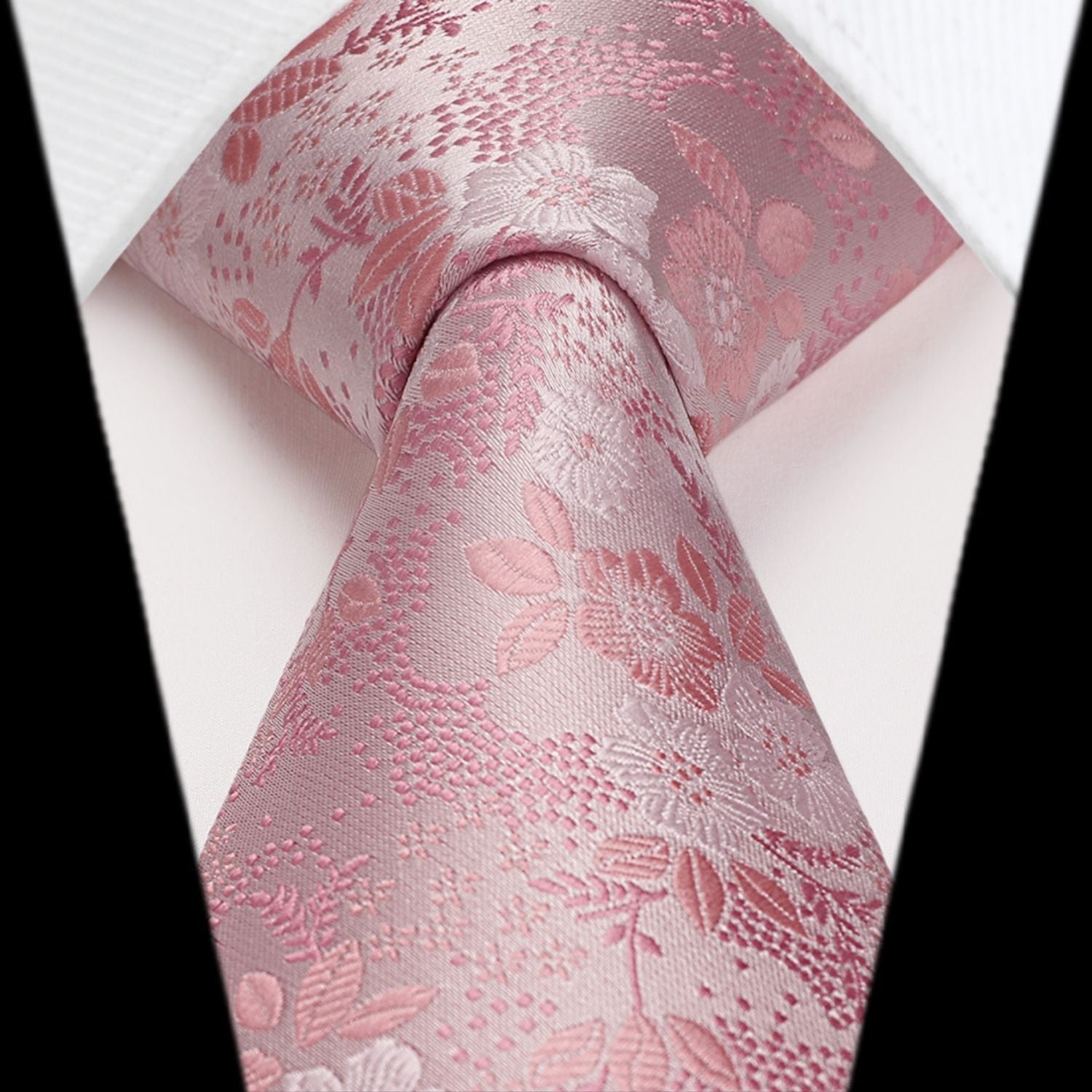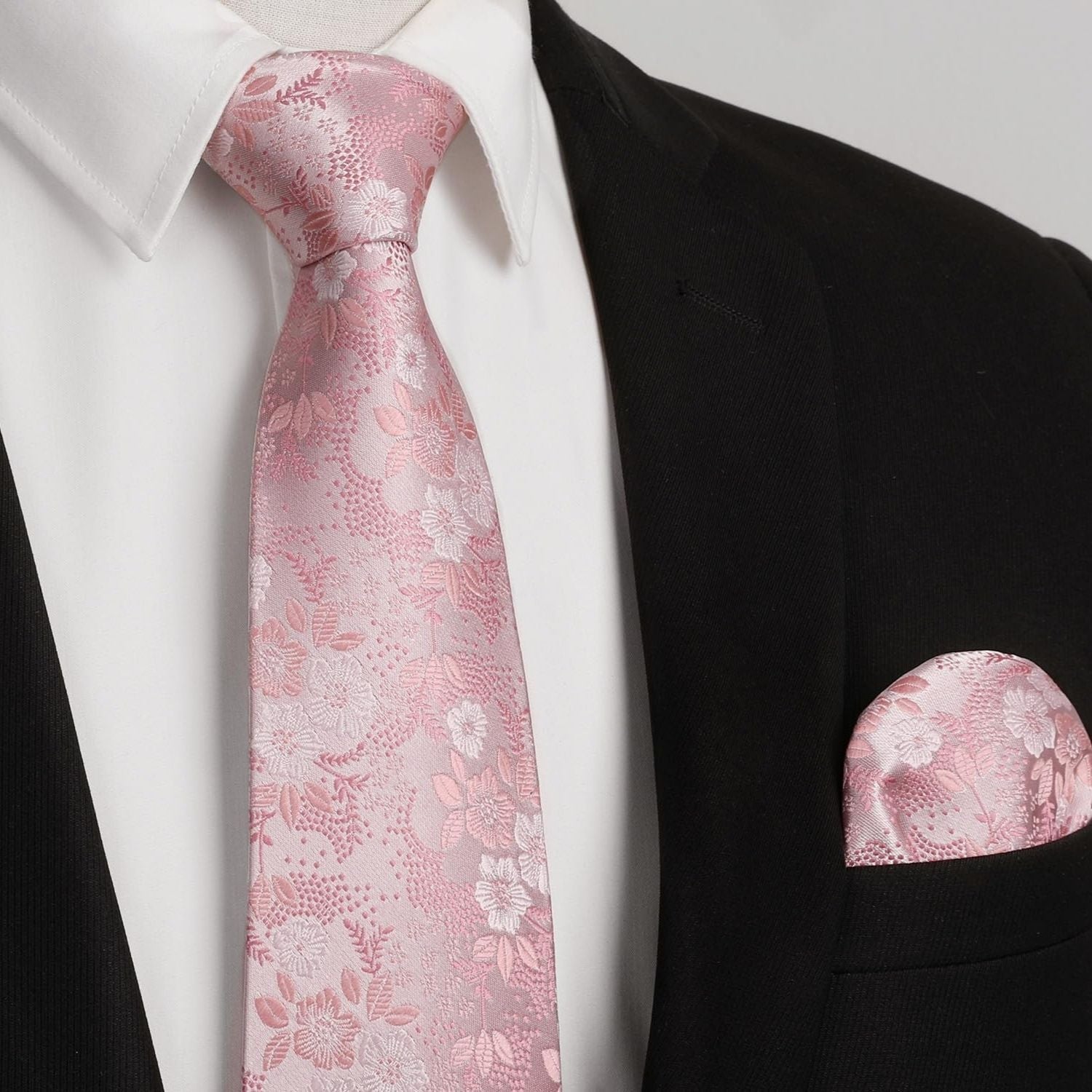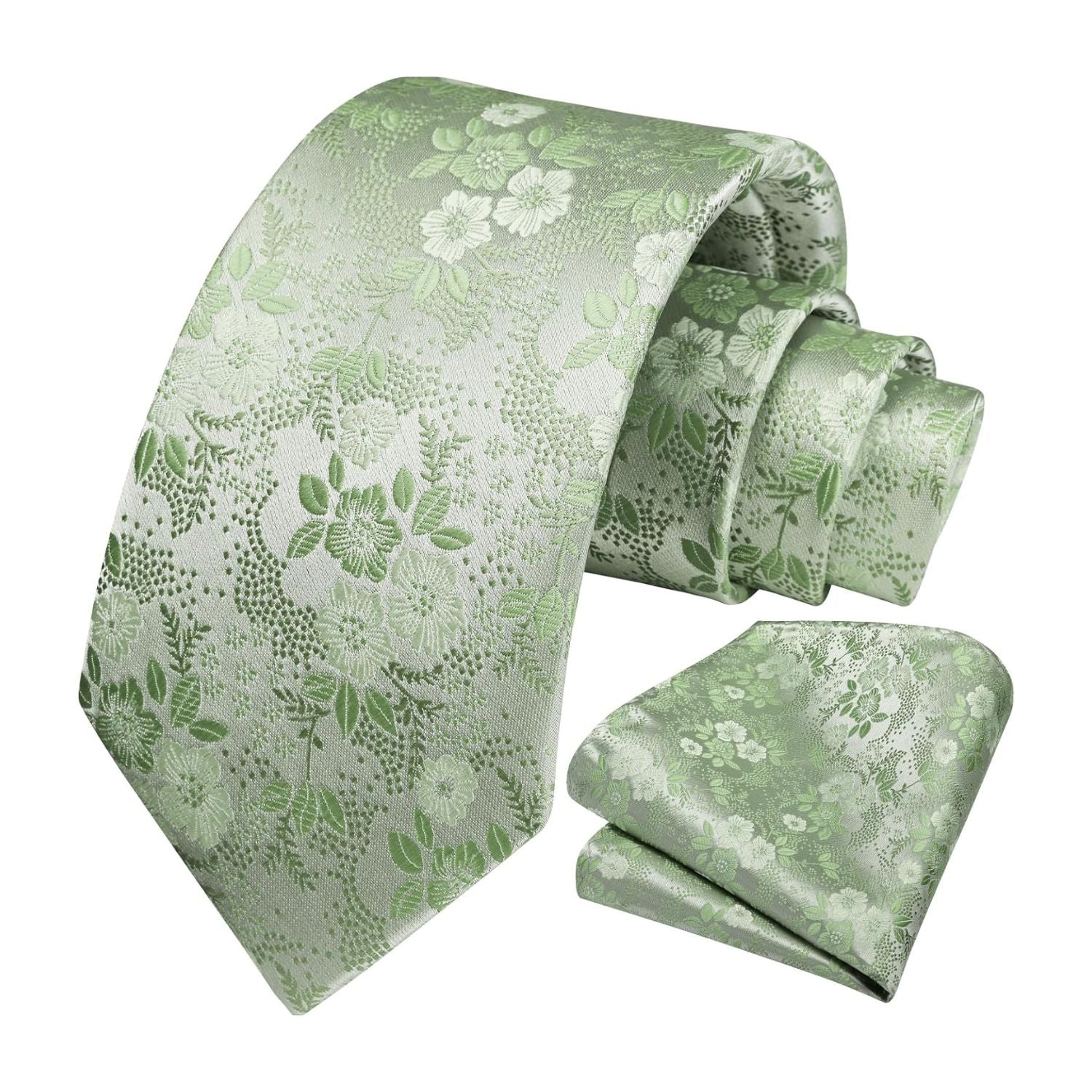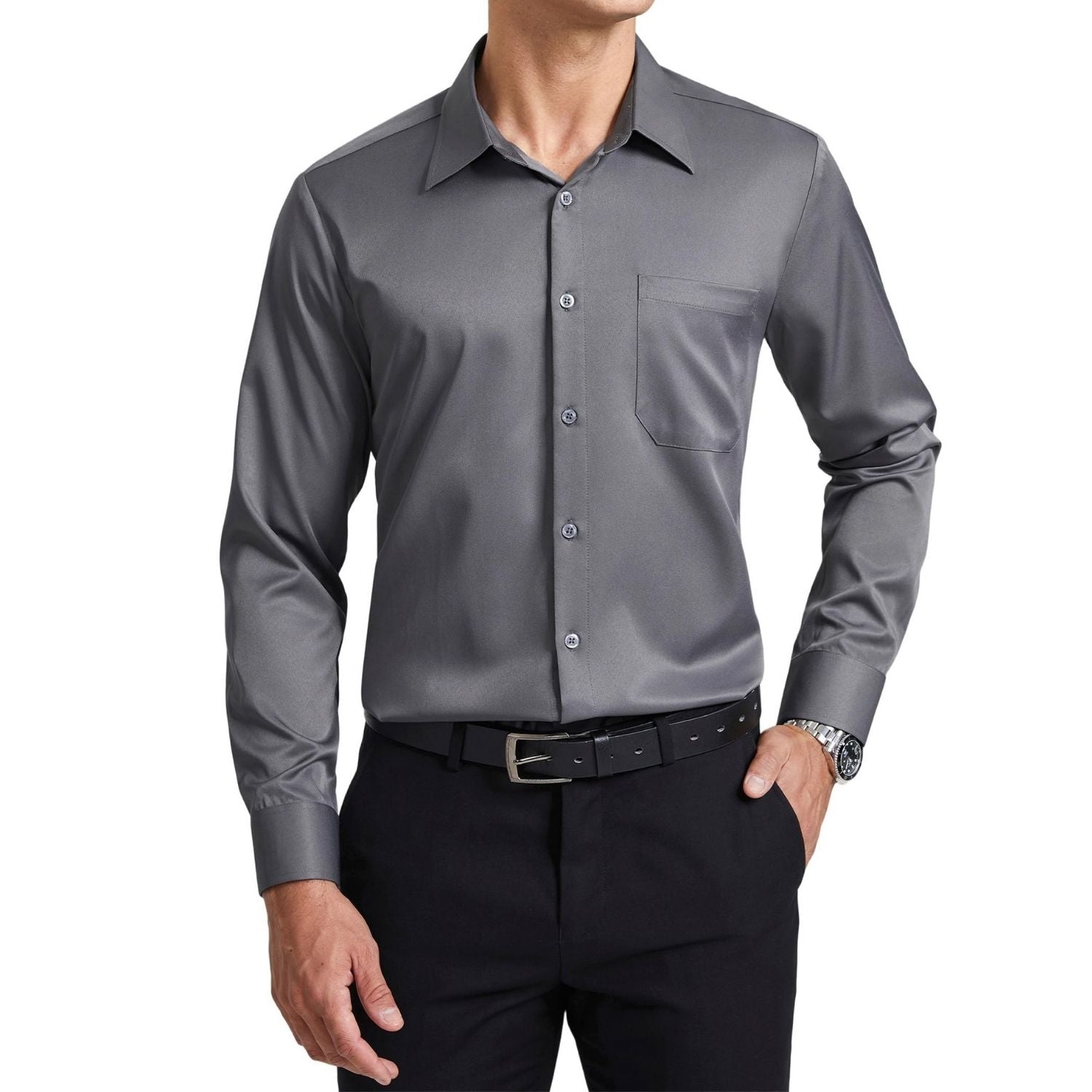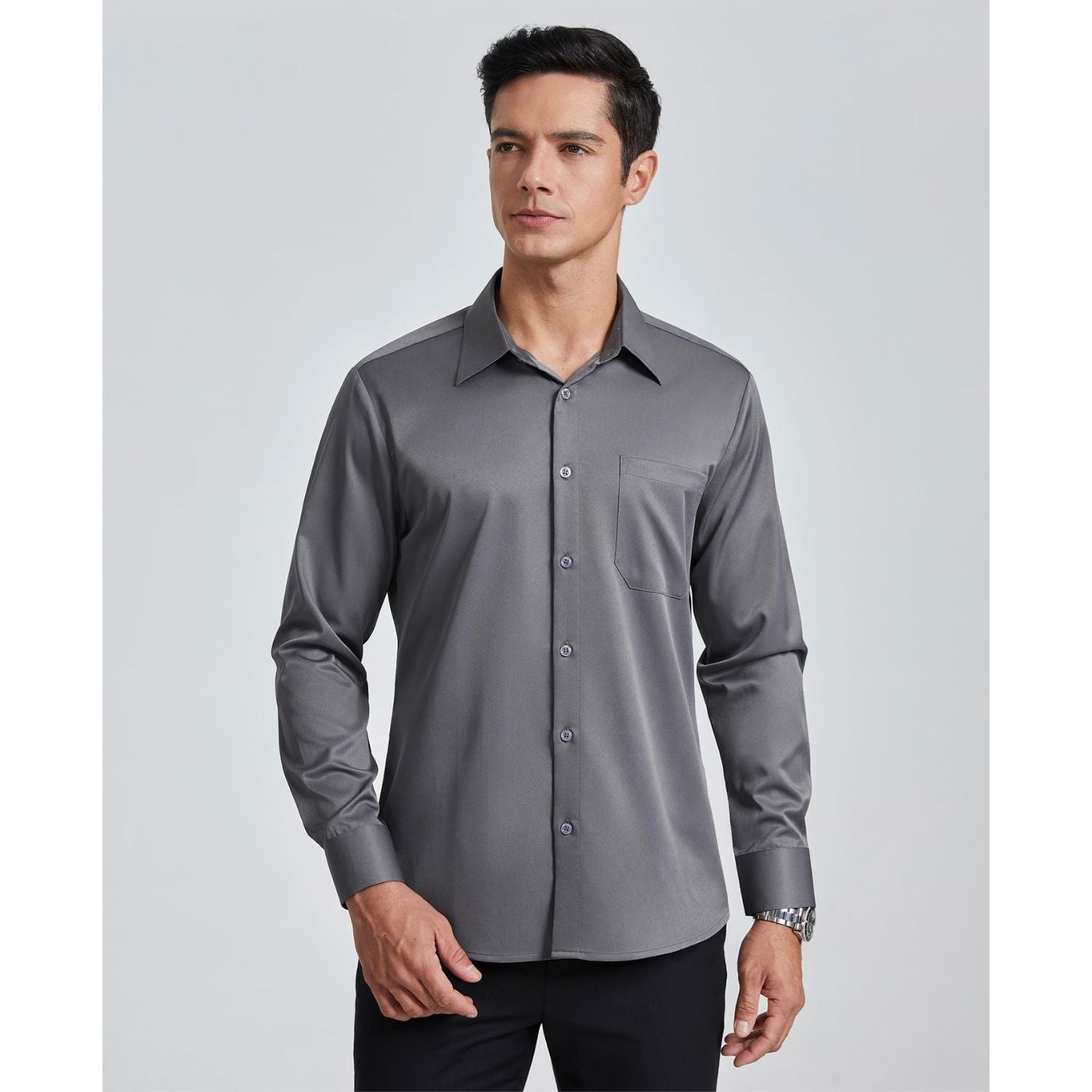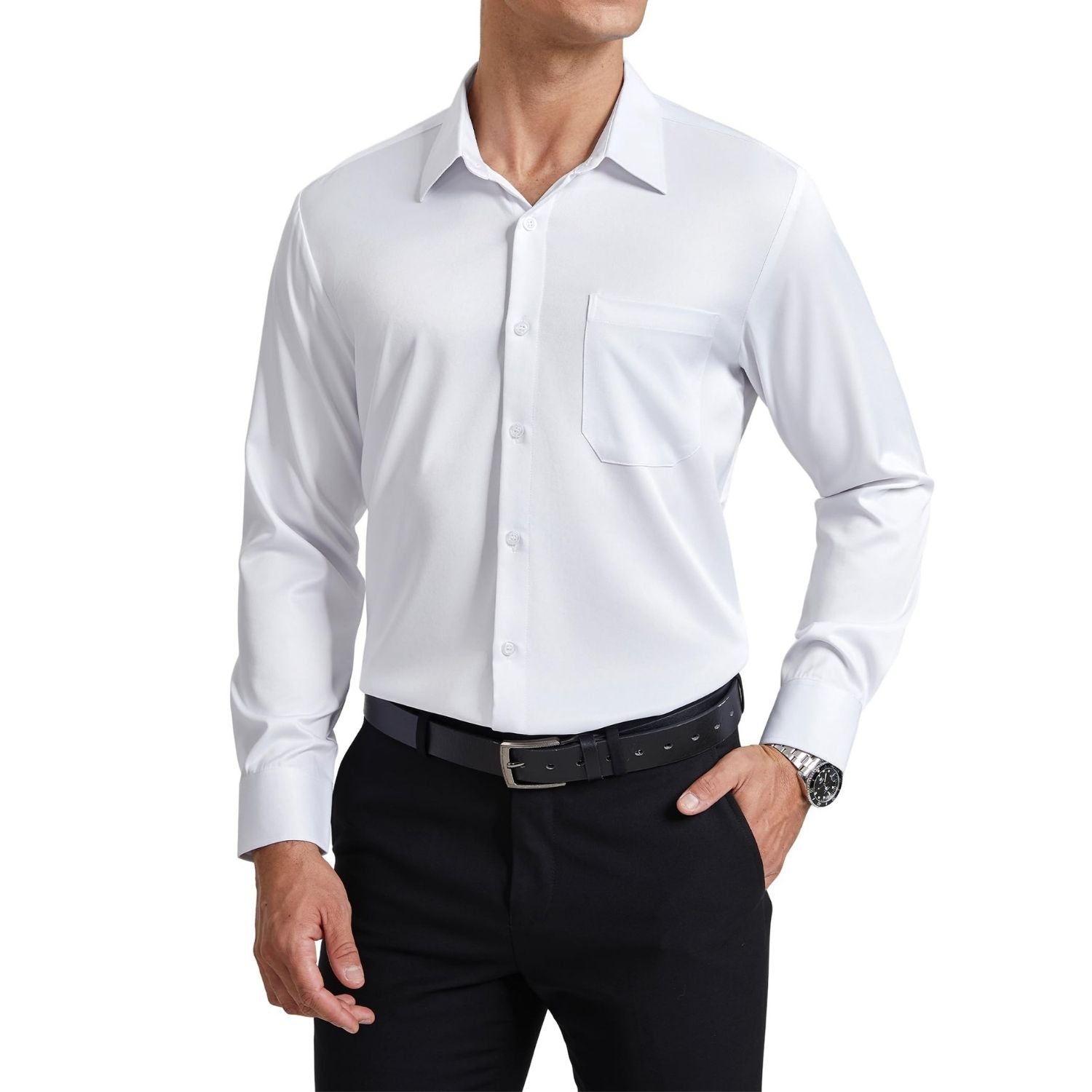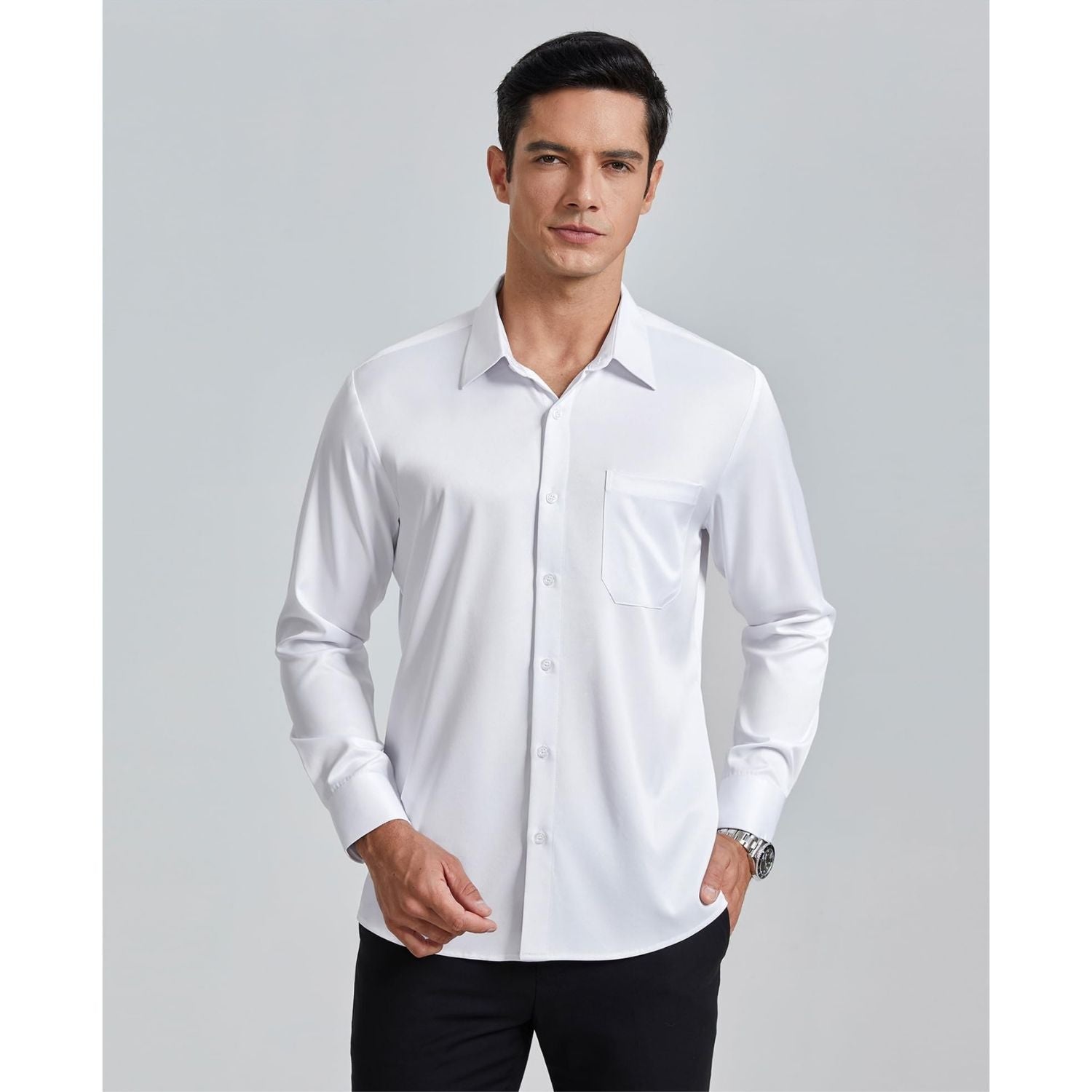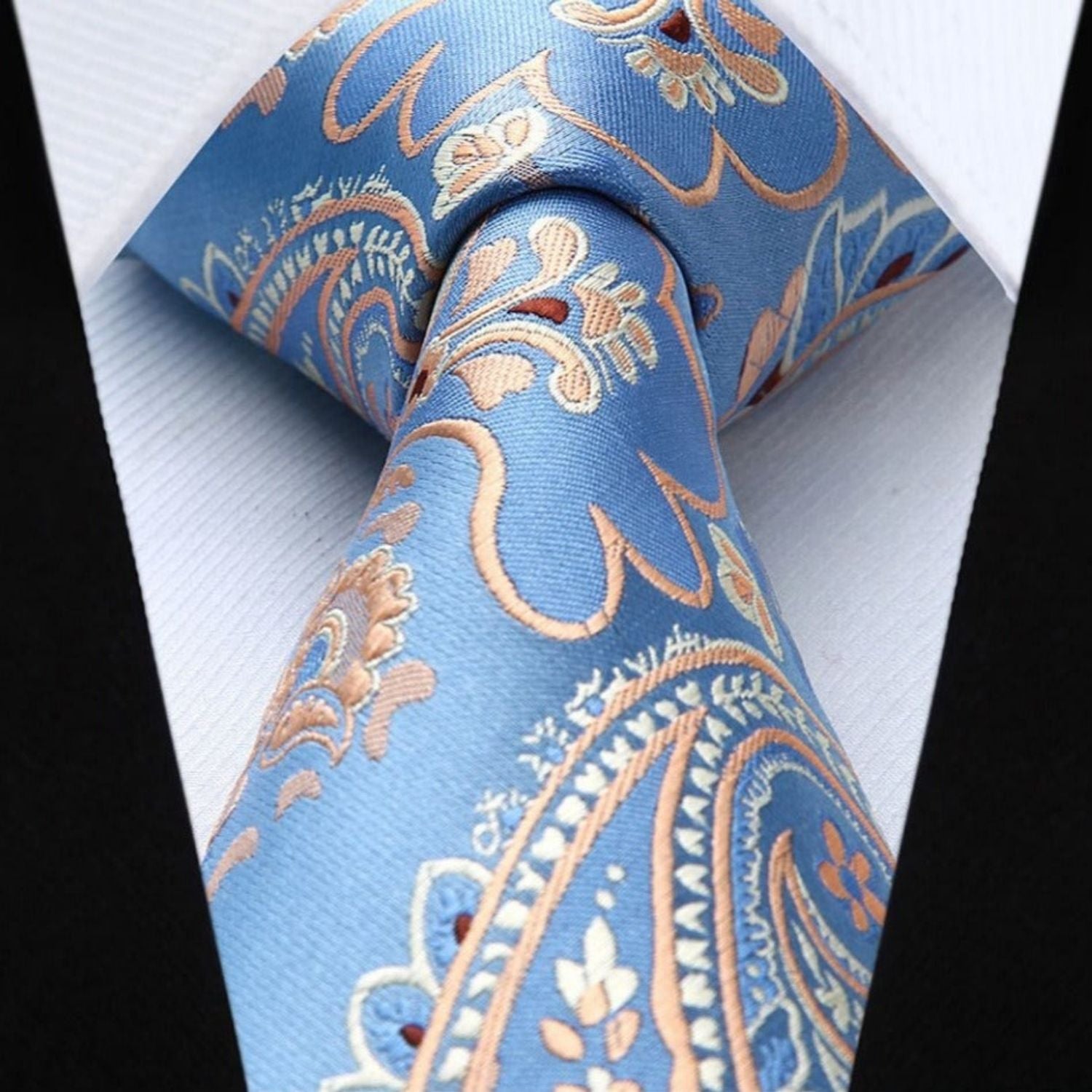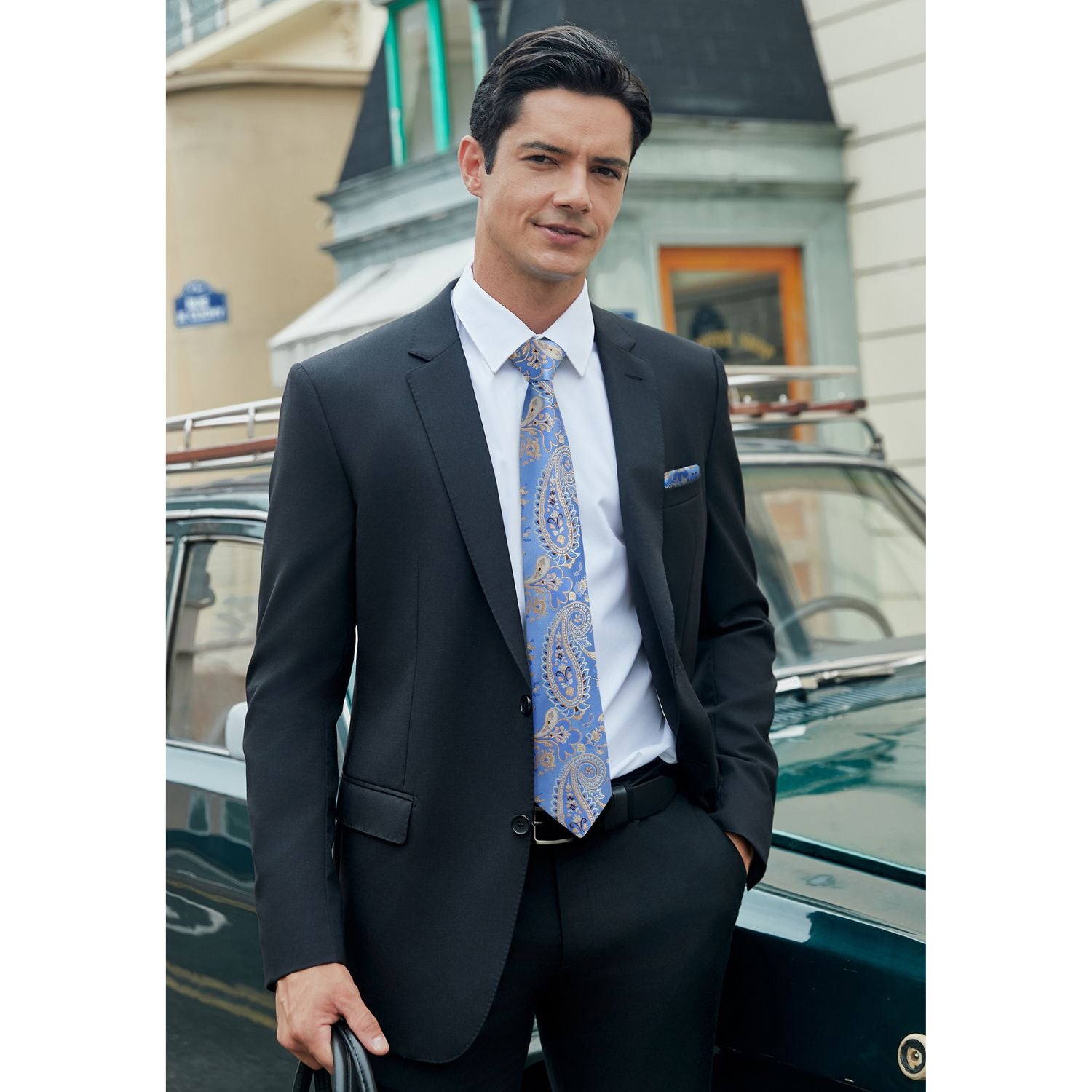Why Does Good Dressing Only Use Three Colors?
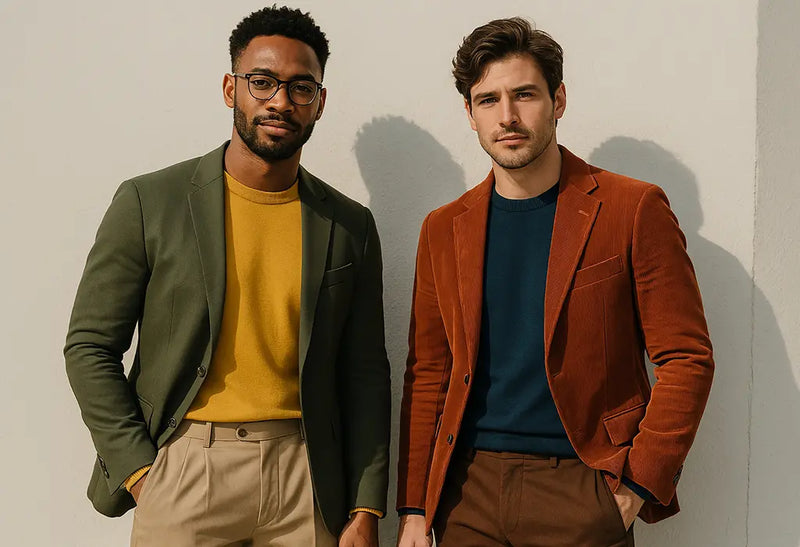
1. Introduction: The Power of Simplicity
Gentlemen, when it comes to dressing well, color can be daunting, but simplicity is the secret. You may have heard the saying, "I want to stand out, but I don't want to look like I've been to the circus."
The answer? Good style often depends on a simple color palette. Whether you're imagining a classic James Bond tuxedo, a sharp navy suit paired with a crisp white shirt, or casual wear that's relaxed yet sophisticated, successful looks often revolve around three main colors.
In this article, we'll explore why the rule of three works so well, how to choose colors, and when it's appropriate to go for a minimal two-tone look, or a more daring four- or five-tone mix. Get ready to level up your style with practical advice and real-life examples.
2. The Science Behind the Rule of Three
Visual Overload and the Human Brain
Our brains are wired for simplicity. When faced with too many colors, the brain becomes overwhelmed and the message of your outfit is lost in the clutter. A sophisticated color palette keeps the focus on you, not on distracting color clashes.
Psychology and Evolutionary Clues
Evolution has hardwired us to notice contrast—once the key to survival, it still guides our perception of aesthetics today. A balanced set of colors provides just the right amount of contrast to be eye-catching without being too abrupt.
Aesthetics and Harmony
Artists and designers know that color harmony often revolves around two or three primary colors. In menswear, applying this principle can create coordinated, visually appealing outfits that are effortlessly stylish.
3. How to Choose Your Colors
Step 1: Start with a Primary Color
Choose a main “anchor” for your look. It could be a navy suit, an olive green jacket, or even a bold burgundy sweater. This color sets the tone for your outfit.
Step 2: Choose a complementary secondary color
Choose a color that contrasts with or enhances your primary color. For example, if navy is your base color, a white or light blue shirt is a safe secondary choice. If you choose olive green, consider contrasting it with tan or cream.
Step 3: Add a tertiary accent color
Introduce an accent color—often in the form of an accessory like a tie, pocket square, or belt. This color can be an understated neutral, like brown leather, or a brighter pop of color, like burgundy.
Example: A navy suit (primary), a white shirt (secondary), and a burgundy tie or pocket square (tertiary) make for a timeless triad.
4. Make Neutrals Your Best Friend
Neutrals – black, white, grey, navy, brown, tan and even select olive greens – are your canvas for style. They’re versatile, timeless and a must-have for balance. Using neutrals in core pieces like a suit or trousers allows you to go bolder with shirts or accessories, ensuring you stay classy.
5. Texture and pattern: Add depth without going overboard
Limiting your color palette doesn’t mean sacrificing interest. Texture and pattern can add depth while keeping the colors balanced:
Texture: Even if they’re the same color, pairing a textured wool blazer with smooth cotton trousers creates a subtle contrast.
Pattern: Subtle pinstripes, micro checks, or herringbone patterns can add depth without overwhelming the look. For a bolder pairing, pair a separate piece with a patterned accessory.
Pro tip: Pairing monochromatic pieces with different textures (e.g., a charcoal wool blazer, a light grey cotton shirt, and a silk tie) doesn’t require too many shades to stand out.
6. Exceptions and variations: Does a 2, 4, or even 5 color palette work?
While the rule of three is a solid guideline, there are some situations where:
Two-color minimalism works best for a sleek, modern look (e.g., a black turtleneck with grey trousers).
Four- or five-color combinations are great for extra embellishment when used sparingly. Small touches like a tie, socks or pocket square can add personality – just make sure each additional hue is kept to a minimum to avoid clashes.
7. Practical combinations to try
Here are seven outfit ideas for each category – 2, 3, 4 and 5 colour combinations. These examples are designed to be practical, sophisticated and easy to wear.
Two-tone combinations
-
Black & White Classic:
- Black suit, white dress shirt
- Black tie, black Oxford shoes
- A minimalist, ultra-formal look.
-
Navy & White Summer:
- Navy polo shirt, white chino pants
- White sneakers
- Crisp, clean, and perfect for warm weather.
-
Gray & Black Urban:
- Gray jeans, black crewneck sweater
- Black leather boots
- A sleek, modern edge for city life.
-
Brown & White Casual:
- Brown leather jacket, white T-shirt
- White chinos, brown boots
- Effortless and fresh everyday style.
- Beige linen shirt, olive chinos
- Beige canvas sneakersBeige & Olive Relaxed:
- Earthy tones that balance casual sophistication.
-
Beige & Olive Relaxed:
- Beige linen shirt, olive chinos
- Beige canvas sneakers
- Earthy tones that balance casual sophistication.
-
Dark Green & Light Blue:
- Dark green sweater, light blue denim jeans
- Light brown belt and boots
- Understated yet distinct.
-
Black & Gray Business Casual:
- Black blazer, gray trousers
- Black turtleneck, black loafers
- Ideal for a refined office look.
3-Color Combos
-
Navy, White, Burgundy:
- Main: Navy suit
- Secondary: White shirt
- Tertiary: Burgundy tie or pocket square
- Finishing touch: Dark brown belt and shoes (acting as a neutral).
-
Olive, Tan, Light Blue:
- Main: Olive green field jacket
- Secondary: Tan chinos
- Tertiary: Light blue button-down shirt
- Paired with brown suede loafers.
-
Gray, Black, Camel:
- Main: Gray trousers
- Secondary: Black turtleneck
- Tertiary: Camel overcoat
- Matched with black Chelsea boots.
-
Brown, Cream, Forest Green:
- Main: Brown tweed blazer
- Secondary: Cream chinos
- Tertiary: Forest green sweater or tie
- Completed with brown leather brogues.
4-Color Combos
-
Navy, White, Brown, Red:
- Navy sport coat, white shirt, brown chinos
- A red pocket square or tie adds the pop
- Brown loafers complete the look.
-
Olive, Beige, Black, Rust:
- Olive bomber jacket, beige chinos, black T-shirt
- Rust-colored scarf or beanie for accent
- Black or brown boots for balance.
-
Blue, Light Blue, White, Gray:
- Medium-blue jeans, light blue shirt
- White sneakers and a gray cardigan
- A brown or black belt to harmonize the ensemble.
-
Charcoal, Light Gray, Teal, Brown:
- Charcoal trousers, light gray sweater
- Teal tie and a brown blazer or sport coat
- Brown dress shoes for a refined finish.
-
Earth Tones: Olive, Brown, Cream, Mustard:
- Olive jacket, brown shirt, cream trousers
- Mustard pocket square or watch strap
- Brown or tan footwear to maintain cohesion.
-
Black, White, Gray, with a Pop of Yellow:
- Black jeans, white T-shirt, gray bomber jacket
- Yellow socks or a cap as a small accent
- Black sneakers to keep the base consistent.
-
Navy, Burgundy, Gray, Tan:
- Navy blazer, gray trousers, burgundy sweater
- Tan belt and shoes for a subtle fourth color
- Optionally add a burgundy or navy pocket square.
5-Color Combos
Premium styling for those ready to push the boundaries - use with caution and balance.
-
Navy, White, Gray, Brown, Light Blue:
- Navy blazer, white shirt, gray trousers
- Brown leather belt and shoes
- Light blue pocket square for a gentle accent.
-
Black, White, Olive, Tan, Red Accent:
- Black denim, white T-shirt, olive overshirt
- Tan boots paired with a red bandana or small neck scarf
- The red pop is minimal yet impactful.
-
Camel, Black, White, Burgundy, Gray:
- Camel coat, black trousers, white shirt
- Burgundy tie or watch strap
- Gray scarf to complete a balanced ensemble.
-
Blue, Beige, Brown, White, Orange:
- Blue jeans, beige cardigan, white tee
- Brown belt/shoes
- A small orange accessory like a beanie keeps the accent subtle.
-
Khaki, Dark Green, Cream, Black, Pink:
- Khaki jacket, cream sweater, dark green trousers
- Black boots with a pink pocket square or socks
- The pink is used sparingly to add a hint of contrast.
-
Gray, Navy, White, Tan, Yellow:
- Gray suit jacket, navy chinos, white shirt
- Tan belt and a yellow lapel pin or watch strap
- Each color plays a small but crucial role.
-
Brown, Light Blue, Olive, Off-White, Burgundy:
- Brown blazer, olive chinos, light blue shirt
- Off-white sneakers and a burgundy accessory (watch strap or tie)
- A confident mix where every color contributes to the overall harmony.
8. Conclusion
The philosophy for menswear is “less is more”. Using one main color as the main color of the whole look and subtly adding one or two complementary colors can create a harmonious and sophisticated style that can stand out without being too abrupt. Playing with textures, patterns and carefully selected accessories can add depth and personality to the overall look.
Key points:
- Use a main color as the whole: choose a hue that resonates with you.
- Use neutrals as a complement: Keep the balance with timeless neutrals.
- Use subtle accents: Use tertiary colors or subtle bright colors in accessories.
Try thoughtfully: Advanced combinations work best because each color addition should be simple but impactful.
Mastering color matching is not just a trend, but a lifelong skill that can enhance your personal and professional image. Stay stylish, experiment confidently, and let simplicity be your guiding principle.

